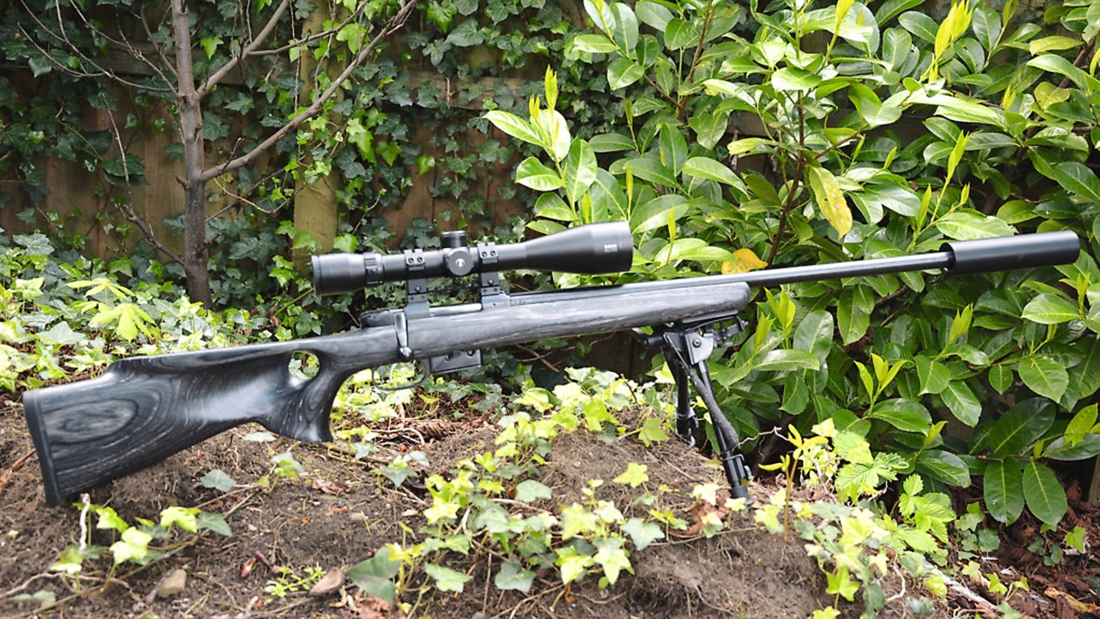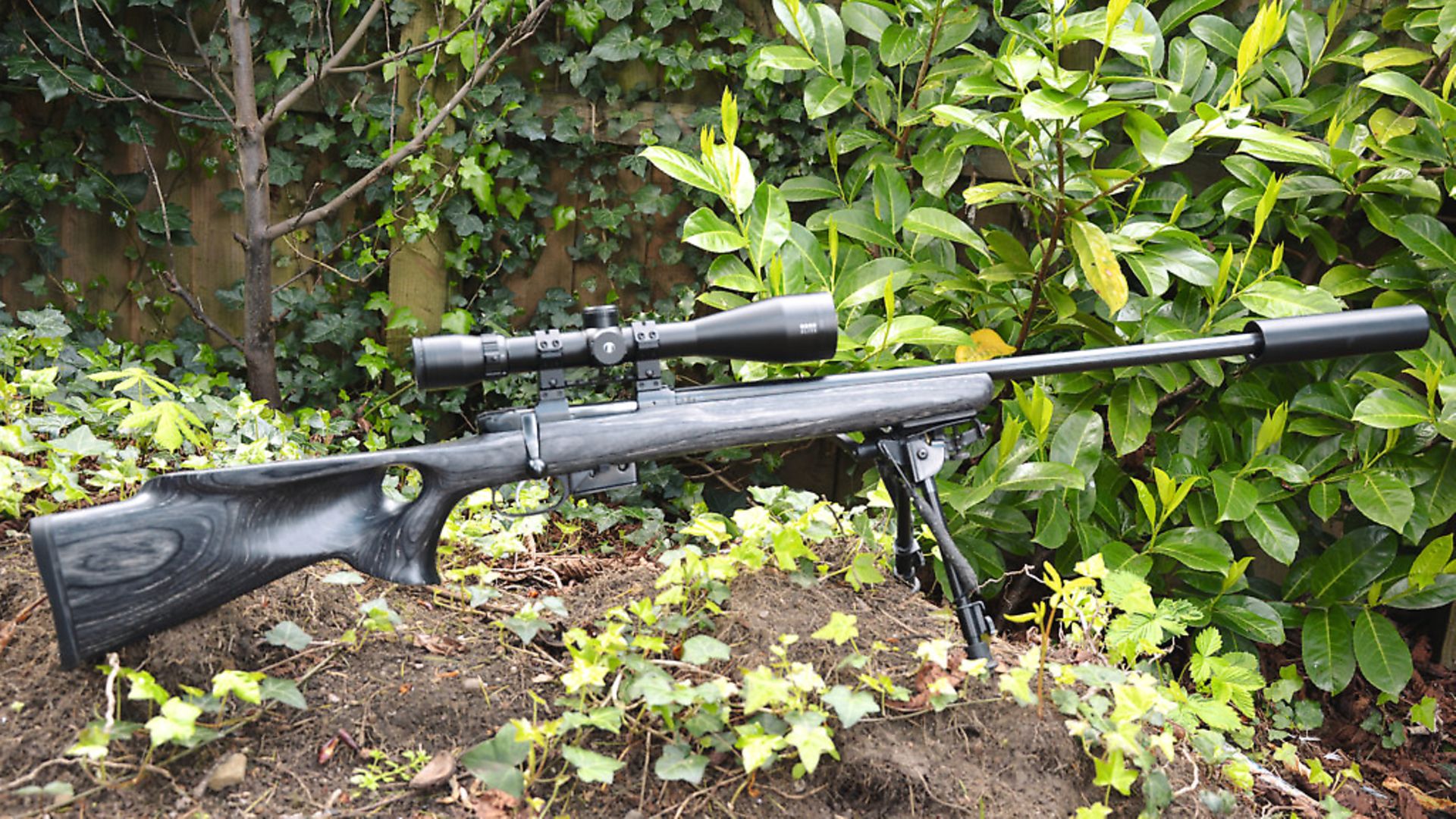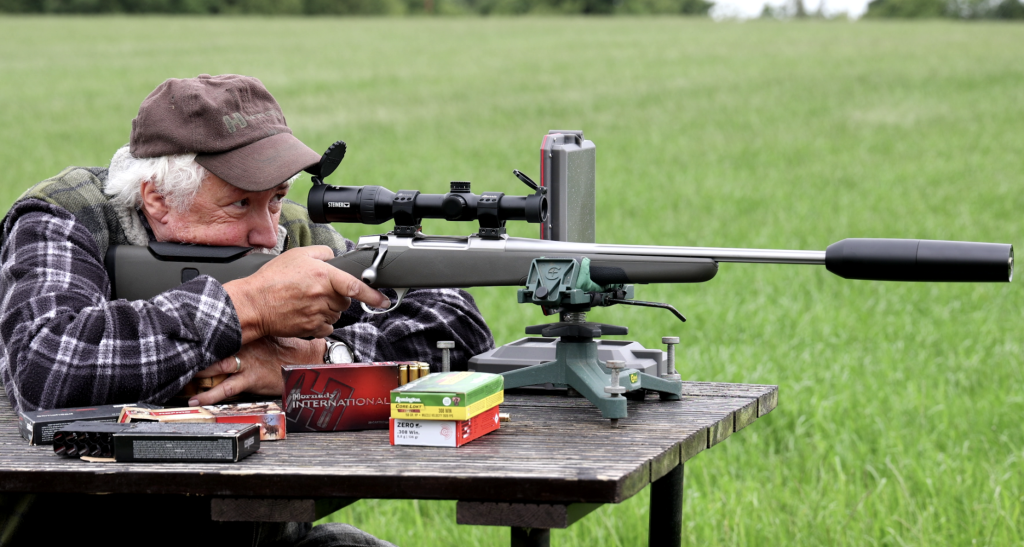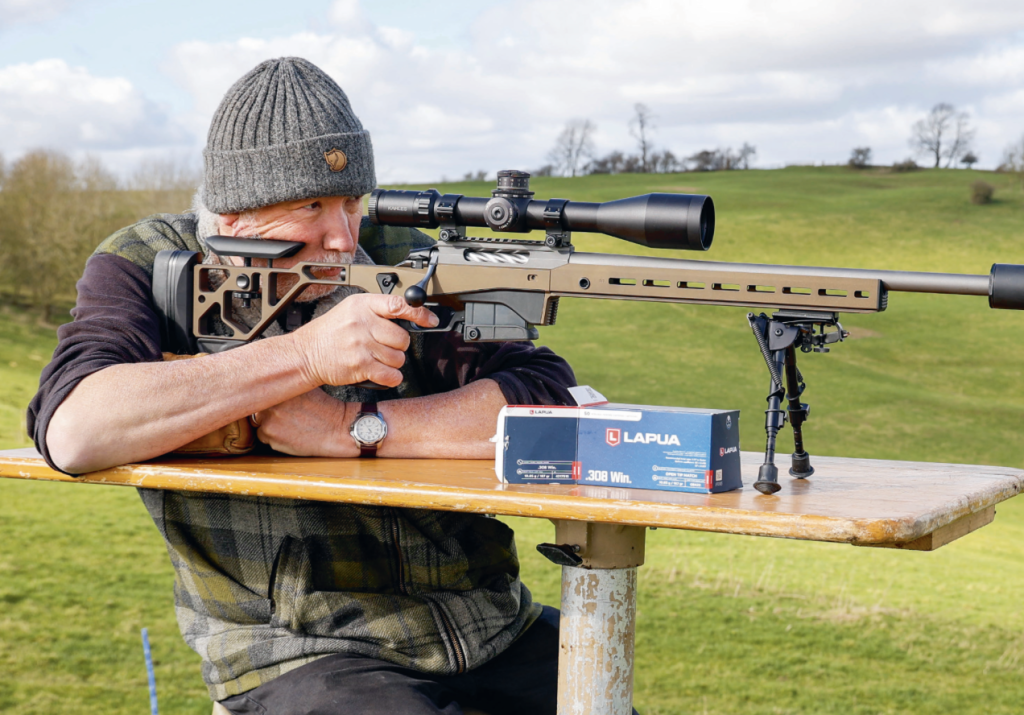CZ 527 Varmint Thumbhole Laminate in .17 hornet – rifle test and review

Detailed rifle test/review by Chris Parkin of the CZ 527 Varmint Thumbhole Laminate in 17 Hornet… perfect for shooting long-range rabbits without making too much noise!
Likes
* Fantastic accuracy and reliability straight out of the box
* Trigger is invites you to tweak it for a slightly sharper break
* Magazine feed handles the delicate 17 Hornet rounds gently
* Although firm when new, a few boxes of ammo soon smoothed up the action
Dislikes
* The bolt knob could do with a little bending downward for modern scope usage
* Kozap rail pushes the scope too high, even with low Weaver rings
* Trigger feel would improve with a deeper curve to the blade for more consistent finger position
* I’d like to see a 20” barrel
Verdict
* Four years on, the 17 Hornet is still a delightful calibre that I look forward to shooting, and I hope its steady growth continues with accurate, dependable rifles like this CZ527. It’s not a foxing tool outright in my opinion, but is certainly capable if you encounter one on the off chance. For longer range rabbits without too much noise and destruction, it’s one of the finest combinations of rifle and ammo I can imagine.
Specification
Model: CZ 527 Varmint Thumbhole Laminate
Calibre: 17 Hornet
Magazine Capacity: 5 round
Barrel: 24” Hammer forged screwcut ½” UNF
Length: 1110mm/43 ½”
Weight: 3.75kg/8.25lbs
Recommended retail prices
* CZ 527 Thumbhole Laminate Varmint £1,024
* Hornady 17 Hornet 20gr V-max ammunition £124/100
* Kozap Picatinny rail £60
* MaccTec 17 Calibre sound moderator £312
Contact Edgar Brothers
01625 613177
IN DEPTH
It’s four years since I first tried out the .17 Hornet cartridge from Hornady and, after two Savage rifles, this is now my second CZ. Of the two brands, the CZ is the more refined build, and after testing the mid-weight varmint in its walnut stock, I now have a Thumbhole Laminate Varmint version with a 610mm/24” heavy barrel.
The Hornet in .17 guise was a pleasurable cartridge to shoot and reload, performing superbly on rabbits out to 300m depending on wind conditions; I did, however, hold back from more than chance encounters on incidental foxes, as I found the bullets just a little too light and frangible to give totally reliable performance if a shot was misplaced. The cartridge is extremely frugal to reload with only around 10 grains of powder involved. The tiny bullets were also not as difficult to seat as I expected, although I did appreciate the excellent Hornady dies that utilise a sliding bullet seater to aid concentric fit without damaging the case mouth.
The CZ model 527 has a mini Mauser-controlled feed action with a centre feed five-round magazine. Sliding the cartridge rim under the extractor claw has proven beneficial many times in the past on this tiny cartridge, where the bullet’s meplat is delicate and unsupportive when it comes to helping a round feed up a ramp into the chamber of your barrel. Of course, one could say the .17 Hornet has an intrinsic design flaw: it will always invite a stuttered cartridge feed because the rebate around the chamber mouth for the case’s rim represents a hurdle to cross with such a tiny pointed bullet and case combo. The relative diameter between bullet and case gradually decreases as overall cartridge size and volume diminishes, and can cause problems even with ‘modern’ case designs like .223-based rounds, so can’t be ignored in any rifle build. Anyway, I digress. The CZ’s controlled feed bolt is especially helpful with this diminutive round.
The CZ shows a neatly screwcut crown with a ½” thread to accept a moderator. The recoil is minute with bullet splash easily spotted in any visible backstop, and the MaccTec moderator makes for little, if any more noise than a .17 HMR. The hammer-forged barrel exhibits a very gradual taper towards the action and free floats fully in all conditions within the stock’s semi beavertail fore-end. A compound shape of a round barrel tenon with a flat bottom, interspersed with rebates for magazine cutout, and an integral recoil lug complete the receiver, before moving into various machined sections for the trigger sub-assembly. The single-set trigger has multiple adjustment points with a 1,200g pull that is cut in half to 600g by a single ‘set’ forwards. I’m not really a fan of set triggers as I feel they steal the feel of a well set-up unit and almost break without developing any timing, but that aside, this one became simpler to judge; don’t think about using it wearing gloves though, as you will snatch it, not squeeze it. The blade is straight, smooth and slim, so does vary in feel if your finger position drifts, effectively changing the leverage exerted. When un-set the feel is a little spongy rather than gritty but becomes predictable. Weight and overtravel are adjustable along with the set function, and if the shot is declined with the trigger ‘set’, application of the safety allows the trigger to be clicked back to the normal position. I always used the trigger in normal mode other than when testing. It felt fine to me as it was, and I preferred the slightly more controlled feel of squeezing it gently to the dead drop feel of setting the unit with extra time, noise and travel on the blade. A little serration and curve on the trigger blade might have improved consistency.
CZ’s own 15mm dovetail rails accept a few ring options. Edgar Brothers supplied a Kozap Weaver rail that locks into the abutment on the rear action bridge. It stayed solidly in position, but did add quite a lot of height to the entire mounting system. It also rusted even though the gun never got wet, so keep it wiped over with an oily rag. Be wary of Weaver versus true Picatinny rails and rings – when tolerances are adhered to precisely, especially with one-piece mounts, things can get complicated and cease to fit.
The bolt started out quite tight but the first hundred rounds soon acclimatised me to the gun and had it sliding more smoothly with reliable feed, extraction and ejection. The twin lugs require a 90-degree bolt lift from the straight handle with a ball end. Again, leaving the scope up high is a hidden benefit, as it gives more space around your fingers to clear the scope’s ocular body. The 18mm bolt knob on the end of a 60mm handle curves upwards to separate it from the stock, and it might be better straight with the stock relieved a little more… just my opinion! As the action smoothed out, a good feel for cartridges being driven into the chamber was retained, which I liked with such a small delicate round that is easily damaged and bent out of shape if roughly rammed closed. The safety catch is a thumb-operated lever high on the right side of the action in front of the bolt shroud. It moves forwards for safe and rearward to fire (the opposite way to ‘normal’), and locks the bolt handle on safe setting. It’s serrated and quiet in operation, but a little too easily caught on the back of your thumb when the bolt is cycled, especially if wearing gloves, and I did get a few misfeeds because of this. A push button for bolt removal sits to the left of the rear bridge. If the need arises, the bolt can be field-stripped without the use of any tools in five seconds flat. It isn’t difficult to reassemble either, but be careful to rotate the inner body into correct alignment with the rear shroud to allow the bolt handle to slot in, otherwise frustration might make you force something incorrectly.
The underside of the gun features an all-steel bottom metal and magazine system holding five rounds. It quickly beds in, becoming easy to load, and looks indestructible thanks to the all-steel construction with a single side-mounted sprung catch to lock it in place. There are two action screws with a neat functional inlet in the stock, which shows a small amount of bedding compound in the recoil lug area to help bed the gun and centralise the barrel in the stock’s fore-end. A tubular steel pillar is inserted around the rear screw to prevent compression of the stock.
The entire build has a hand-finished feel that carries old world charm and a bit of culture, especially with the iconic Mauser-styled action. I liked the trigger unit and complete lack of threadlock on any of its adjustments – it invites you to refine it that little fraction from the ‘averaged’ factory set-up.
The 20gr V-Max Superformance ammo advertises 3,650fps and this figure proved correct in this gun, varying between 3,625fps and 3,660fps over the 100 rounds supplied with the gun. I saved the last 25 rounds after range use for getting some local rabbits, and my former opinion was reconfirmed that this is a great calibre for my personal hunting environment, where fewer shots are required but each must be bang on the money (unlike HMR territory, where more rounds are needed but at shorter ranges, over stubbles and the like). The .17 Hornet also stands out to me as a cartridge that is as accurate in use as it says it will be on the box, and stands up to the hype for both speed and energy, alongside the accuracy and consistency from box to box. I would comment more on the stock but have covered this Boyd laminate unit in depth before on several CZ and Savage rifles. Its chunky build and weight do help counterbalance the 610mm barrel, but if I were to have a .17 Hornet like this, I would take 100mm off the barrel and go for the lighter weight overall. This gun handles well walking and stalking, but is too long for comfortable use from a vehicle cab. I was impressed above my expectation by the new .17 WSM last month, but this month I’m continuing my appreciation for the Hornet, another round that has appealed to me personally, like the WSM, far more than the HMR ever did.
Related Articles
Get the latest news delivered direct to your door
Subscribe to Rifle Shooter
Elevate your shooting experience with a subscription to Rifle Shooter magazine, the UK’s premier publication for dedicated rifle enthusiasts.
Whether you’re a seasoned shot or new to the sport, Rifle Shooter delivers expert insights, in-depth gear reviews and invaluable techniques to enhance your skills. Each bi-monthly issue brings you the latest in deer stalking, foxing, long-range shooting, and international hunting adventures, all crafted by leading experts from Britain and around the world.
By subscribing, you’ll not only save on the retail price but also gain exclusive access to £2 million Public Liability Insurance, covering recreational and professional use of shotguns, rifles, and airguns.
Don’t miss out on the opportunity to join a community of passionate shooters and stay at the forefront of rifle technology and technique.





